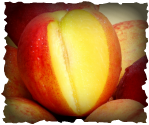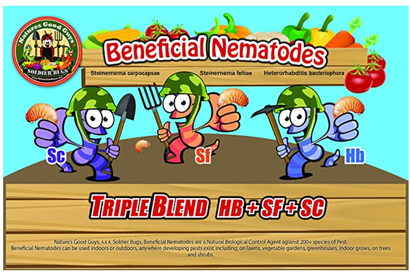Tropical Peaches are now a reality!

Don't waste money on the wrong peach tree. Here in Florida we have some great choices thanks to
the University of Florida.
These trees sell out fast, why not reserve some now from your local grower. You will find the best choices in stock usually around January, February and early March.
Here are my picks for Florida and the Subtropics.
Below is an average chill (45 Degrees for 1 hour) requirement for the variety.
UF Best 100 chill
Florida Grande 100 chill
UF Sun 100 chill
Florida Prince 150 chill
Tropic Beauty 150 chill
What are chill hours?
Peach trees require a certain number of hours of temperatures that can vary from 32 to 55 degrees F in order to break dormancy and set fruit.
Planting and watering your tree:
Your container grown peach tree can be planted anytime of the year. Keep these basic points in mind depending on the season. Newly planted trees in summer need watering at least twice a week. This means they may not need much watering in summer if the weather is cooperating and providing the watering. Get a rain gauge and set it near the tree to be sure. In winter do not provide more than one inch of water per week. Choose a sunny well drained spot. The best soil is a sandy loam that is slightly acidic.
Watch our tree planting video click here:
Fertilizing your tree
Do not fertilize the tree when you plant it!
In February you should fertilize the tree before it begins to bloom. Fertilize again in March, May and July. You can use a synthetic 6-4-6 fertilizer with micro/macro nutrients or similar blend. Read the label for application rates.
If you have sandy soil You can use a synthetic 12-6-8 fertilizer with micro/macro nutrients or similar blend. To fertilize the organic way, use rabbit manure, seaweed, compost teas etc. Always spread the fertilizer around the tree's drip line. Gently work the organics into the top layer of soil.
Tips:
Peach trees and other stone fruit trees should not be sprayed with copper fungicides. Copper will cause yellowing of the leaves and also cause many small holes all over the leaves with red to brown spots. You may think it is insect damage. Peach trees are not very salt tolerant. Leaves are injured by salt spray.
Hey, want to grow bigger peaches?
Florida peaches are sweet and juicy but kind of small compared to Georgia or California peaches. For larger peaches be sure to thin away some of the fruit from the branches. Remove fruit that develops during the first three or four weeks. Leave one fruit for about every six inches of branch.
Remember to prune your tree lightly after harvesting to keep it healthy and manageable. Heavy pruning is done during the trees dormant season. Specific pruning tips coming soon.
Treat fungal problems with approved fungicides
Peach trees will suffer from nematode root damage. Keep them safe and growing strong by using beneficial nematodes that attack the roots!
Peach trees and other stone fruit trees should not be sprayed with copper fungicides. Copper will cause yellowing of the leaves and also cause many small holes all over the leaves with red to brown spots. You may think it is insect damage. Peach trees are not very salt tolerant. Leaves are injured by salt spray.
Hey, want to grow bigger peaches?
Florida peaches are sweet and juicy but kind of small compared to Georgia or California peaches. For larger peaches be sure to thin away some of the fruit from the branches. Remove fruit that develops during the first three or four weeks. Leave one fruit for about every six inches of branch.
Remember to prune your tree lightly after harvesting to keep it healthy and manageable. Heavy pruning is done during the trees dormant season. Specific pruning tips coming soon.
Treat fungal problems with approved fungicides
Peach trees will suffer from nematode root damage. Keep them safe and growing strong by using beneficial nematodes that attack the roots!
If you grow peach trees you need this! Really you do!!
|
|
* FDA Disclaimer
The products and statements made about specific plants or products on this web site have not been evaluated by the United States Food and Drug Administration (FDA) and are not intended to diagnose, treat, cure or prevent disease. All information provided on this web site or any information contained on or in any product label or packaging is for informational purposes only and is not intended as a substitute for advice from your physician or other health care professional. You should not use the information on this web site for diagnosis or treatment of any health problem. Always consult with a healthcare professional before starting any new vitamins, supplements, diet, or exercise program, before taking any medication, or if you have or suspect you might have a health problem.
Advertising Disclosure:
Pepesplants.com is a participant in the Amazon Services LLC Associates Program and also Googles affiliate advertising program. The programs provide a means for web sites to earn revenues from advertising and or sales.
Content Disclosure
Use all information on this site at your own risk.
The content here is based on the publishers personal experience in the green industries.
Although every reasonable effort has been made to ensure the accuracy of the information contained on this site, absolute accuracy cannot be guaranteed. This site, and all information and materials appearing on it, are presented to the user "as is" without warranty of any kind, either express or implied
The products and statements made about specific plants or products on this web site have not been evaluated by the United States Food and Drug Administration (FDA) and are not intended to diagnose, treat, cure or prevent disease. All information provided on this web site or any information contained on or in any product label or packaging is for informational purposes only and is not intended as a substitute for advice from your physician or other health care professional. You should not use the information on this web site for diagnosis or treatment of any health problem. Always consult with a healthcare professional before starting any new vitamins, supplements, diet, or exercise program, before taking any medication, or if you have or suspect you might have a health problem.
Advertising Disclosure:
Pepesplants.com is a participant in the Amazon Services LLC Associates Program and also Googles affiliate advertising program. The programs provide a means for web sites to earn revenues from advertising and or sales.
Content Disclosure
Use all information on this site at your own risk.
The content here is based on the publishers personal experience in the green industries.
Although every reasonable effort has been made to ensure the accuracy of the information contained on this site, absolute accuracy cannot be guaranteed. This site, and all information and materials appearing on it, are presented to the user "as is" without warranty of any kind, either express or implied
Site created and managed by Pepe's Fruit Trees. Copyright 2024 - All Right Reserved
Site created and managed by Pepe's Fruit Trees. Copyright 2024 - All Right Reserved






